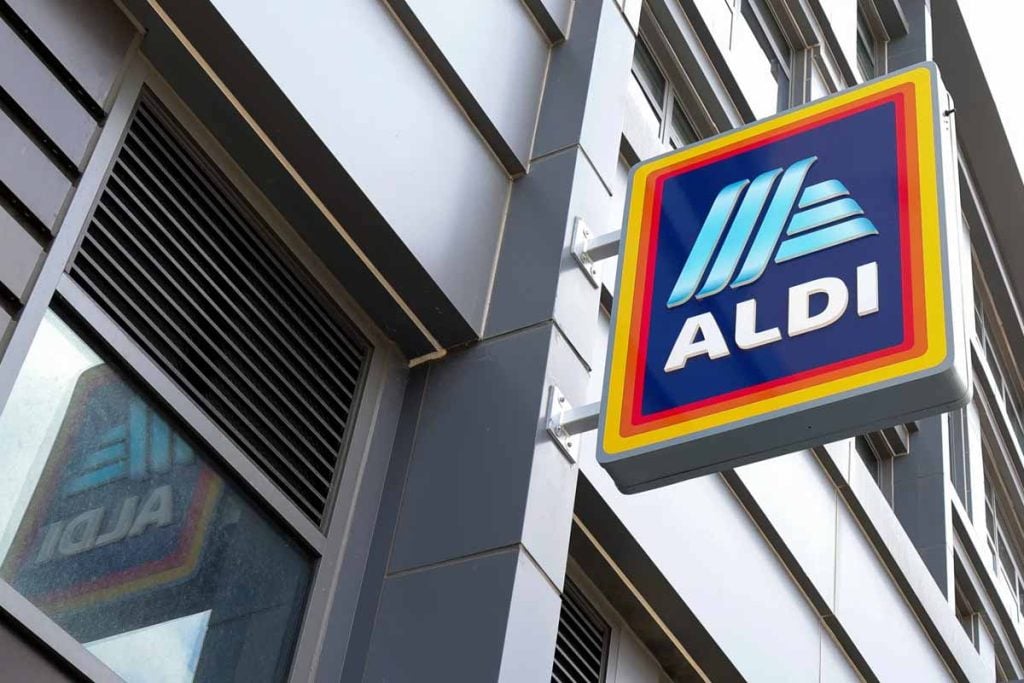You feel the tempo the moment you roll a cart forward. The discount model runs on speed, discipline, and clear rules that keep lines moving. Shoppers swap frills for focus, and the rhythm rarely breaks. Today, Aldi is tweaking that rhythm, so the checkout flow many rely on now faces a fresh test.
Why Aldi built a lightning-fast checkout culture
Lean operations shape the experience from the start, while a quarter unlocks the cart and encourages tidy returns. Shoppers bring reusable bags because the store streamlines costs and reduces clutter. Cashier lanes stay minimal, yet the pace remains brisk, so the queue advances quickly even during busy hours.
Products carry large barcodes that scan in a blink, because packaging design supports speed at scale. Teams keep items moving while shoppers bag purchases themselves at the designated area. The result feels simple and efficient, yet responsibility shifts to customers after the scan.
Etiquette matters because the model depends on flow, and preparation prevents bottlenecks. Organize items before unloading, while heavy goods go first and delicate goods last. Move to the bagging shelf swiftly, since cashiers rarely pause. The rhythm rewards attention, and the line benefits when each customer plays their part. Aldi
How the revamp changes the flow on busy lanes
Many stores once offered self-checkout for those who prefer scanning at their own pace, yet recent changes alter that option. Shoppers report removals in several locations, while others still see machines in service. The rollout appears uneven, and local teams adapt formats to fit each store’s traffic.
One customer noted longer waits, because with only one lane open, lines stretched. They cited “10–15 minutes” as typical during peak periods, while self-checkout previously absorbed part of the rush. Without those stations, the staffed lane must carry more volume, so timing around after-work surges gains importance.
Speculation centers on shrink and loss prevention, as managers weigh speed against control. Removing self-checkout can reduce errors and discourage opportunistic theft, while re-focusing labor on lanes. Shoppers will adjust habits, although patience helps. Planning trips outside peak windows can ease stress, and preparation still shortens time at the belt. Aldi
Customers split between speed and control
Plenty of regulars favor cashier-led lanes because trained scan rates outpace most amateurs. They say stress drops when a pro drives, while bagging happens after the scan at the side counter. The process looks fast and firm, and the line benefits when the cashier sets the rhythm. Aldi
Others prefer self-checkout because they control tempo and pack as they go. That approach feels calmer for some, while the rush fades when nobody waits to scan. When self-checkout disappears, shoppers can still stage bags in carts, and they can load by zone to keep order.
Reports vary by location, since some stores never used self-checkout and still rely on staffed lanes. Many people stick with cashiers regardless of basket size, because that option remains reliably quick. Watching carts ahead helps estimate timing, while a lane with fewer overstuffed trolleys often proves faster.
Loss prevention, staffing, and claims of shrink
Employees commenting online point to theft pressure, while divisions try to cap losses that erode margins. One Chicago thread cited days with “up to $7,000” in inventory loss, although figures remain store-specific. The change targets controllable risks, and front-end visibility increases when scanning stays in one monitored place. Aldi
Lean staffing sits at the model’s core, so fewer lanes must sprint to keep queues short. Big barcodes, practiced cashiers, and a grab-and-go bagging shelf support that sprint. Removing self-checkout concentrates traffic, while managers redeploy labor to maintain pace and tighten oversight where it matters most.
Chain-wide decisions remain unclear, because some locations keep machines and others never had them. Expect formats to evolve by neighborhood, while teams test what fits demand. Shoppers can track local patterns across several weeks, and they can plan trips accordingly. Flexibility helps when stores refine policies in real time.
What Aldi shoppers may see on their next trip
Arrive organized so the belt tells a story. Heavy, boxed, and stackable items go first, while soft goods and eggs finish. Keep payment ready, because closing fast protects the tempo. A quarter for the cart and sturdy bags near the top save seconds when the line moves. Aldi
On the belt, group items by storage zone, while labels face up for quick scans. Slide packed goods to the shelf and finish bagging away from the lane. Choose a queue with carts, not baskets, only when you carry more yourself. A lightly loaded line often clears faster than it looks.
If self-checkout still operates, decide based on basket size, comfort, and crowd. Small runs may feel easier solo, while big shops usually favor a seasoned cashier. Either way, respect the flow, because courtesy compounds speed. The shared goal is simple: clean scanning, quick exits, and chilled food that reaches home cold.
Why the checkout shift still rewards simple, prepared shopping
Shoppers will adapt as Aldi rebalances speed with oversight, while lanes keep favoring good habits and clear prep. Pack with intention, and the line moves. Watch peak times, and stress drops. The model still trades frills for pace, so the smartest strategy remains the same: arrive ready and keep things moving.
